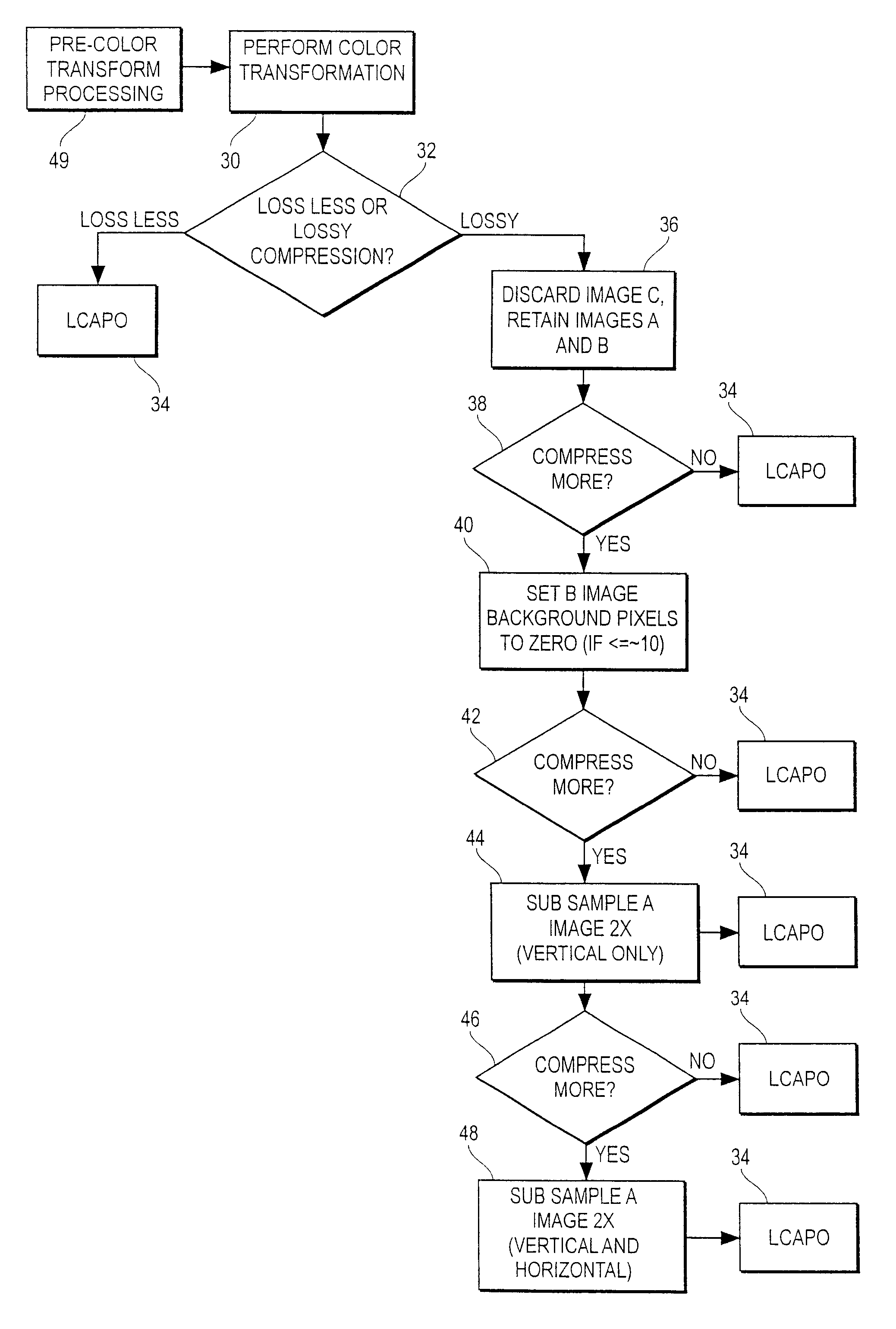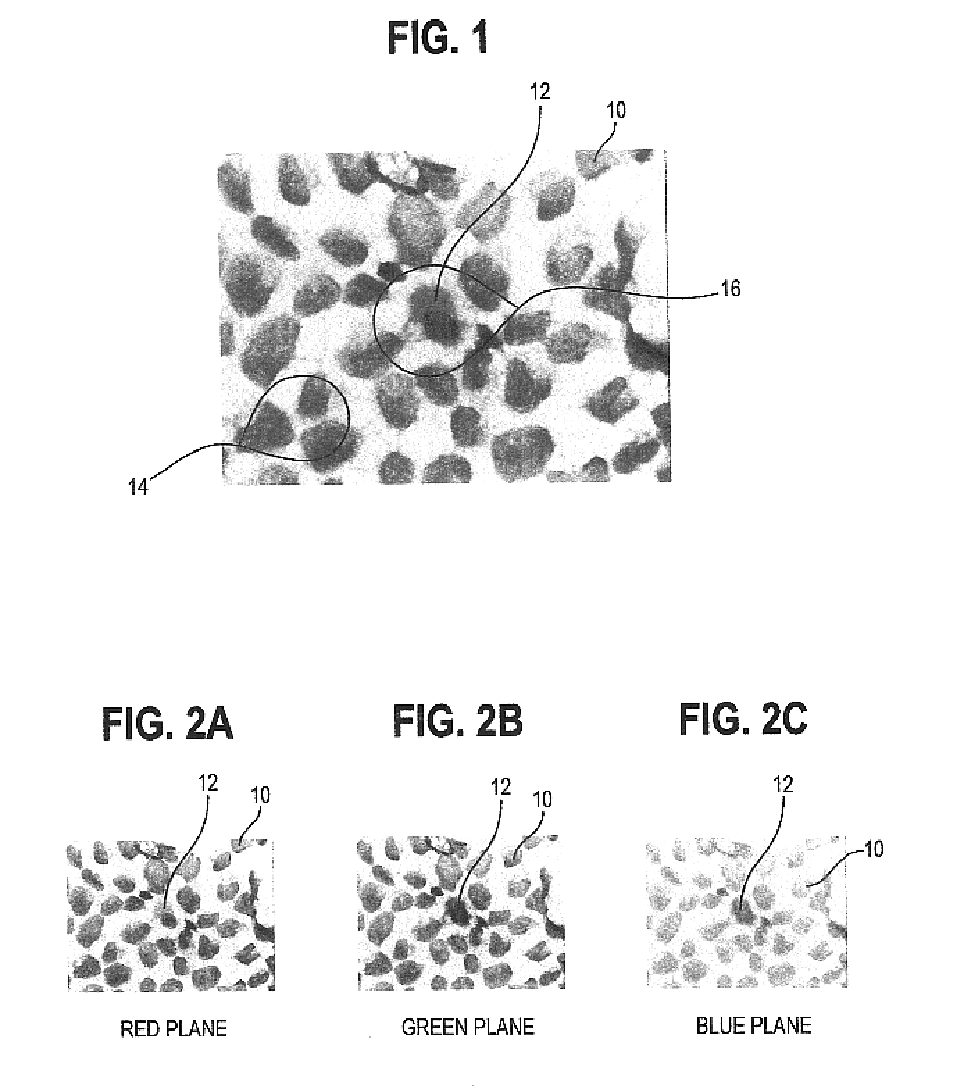Color image compression via spectral decorrelation and elimination of spatial redundancy
a color image and decorrelation technology, applied in the field of color image compression via spectral decorrelation and elimination of spatial redundancy, can solve the problems of reducing the overall reducing the compression of original data, and often high spatial redundancy of image data, so as to reduce the loss of color imagery, reduce the loss of useful image information, and reduce the spatial redundancy
- Summary
- Abstract
- Description
- Claims
- Application Information
AI Technical Summary
Benefits of technology
Problems solved by technology
Method used
Image
Examples
Embodiment Construction
Overview
[0037]Before describing the presently preferred compression technique in detail, a demonstration will be provided first showing that 3-band color images can be spectrally decorrelated to produce spatially redundant images. The spatial redundancy is removed through loss less compression methods. The following description will provide a conceptual understanding to the color space transformation aspects of this invention and how the spectral de-correlation features can be used to produce a new representation of the image data that provides a basis for either loss less or lossy compression techniques. This conceptual understanding will also aid in understanding of how the invention can be embodied as a series of software instructions stored in a machine-readable storage medium, and executed by a general-purpose computer.
[0038]FIG. 1 shows a typical color microscope image of a tissue sample showing a collection of cells. The blue stained cells 10 are “normal” while the cell 12 in...
PUM
 Login to View More
Login to View More Abstract
Description
Claims
Application Information
 Login to View More
Login to View More - R&D
- Intellectual Property
- Life Sciences
- Materials
- Tech Scout
- Unparalleled Data Quality
- Higher Quality Content
- 60% Fewer Hallucinations
Browse by: Latest US Patents, China's latest patents, Technical Efficacy Thesaurus, Application Domain, Technology Topic, Popular Technical Reports.
© 2025 PatSnap. All rights reserved.Legal|Privacy policy|Modern Slavery Act Transparency Statement|Sitemap|About US| Contact US: help@patsnap.com



